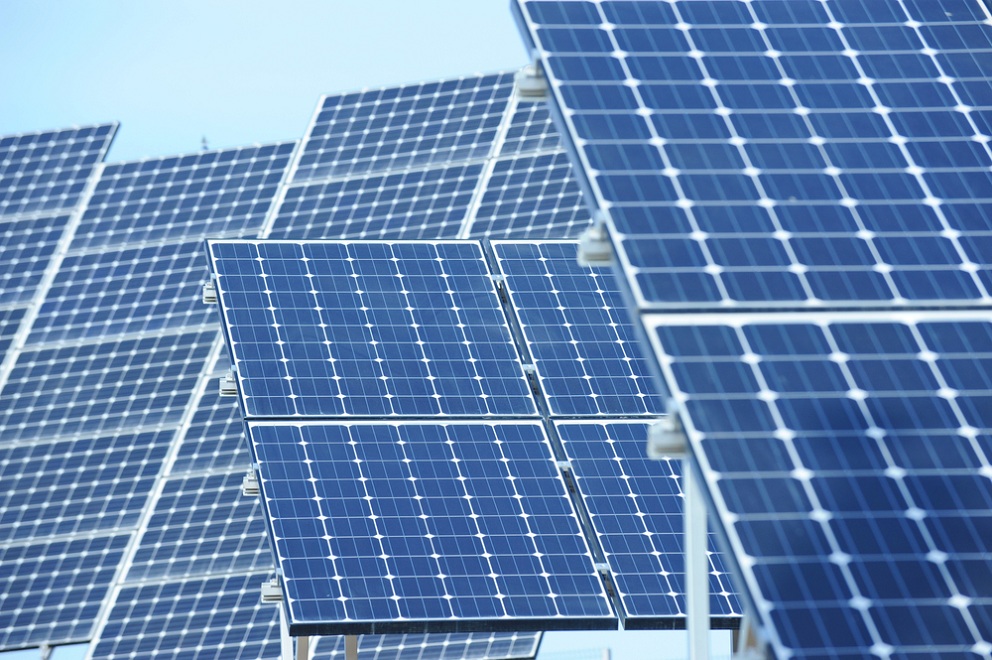How do you size a solar power system for your application?
Undersizing your solar power system will leave you without enough power for your needs.
Oversizing your system, on the other hand, will add unnecessary costs to your budget and can lead to battery issues.
In this sizing guide, we discuss how to properly size a solar power system for your home, RV, off-grid cabin or any other space.
This guide covers the basics of sizing the solar panels, battery bank, solar charge controller, and inverter - and it is written for non-engineers and others without a formal education on electrical circuits.
If you have any questions about this, please don’t hesitate to drop us a comment below.
5 Factors That Determine Solar System Size

When you are sizing your solar system, there are five basic things you need to know upfront, including.
- 1Your daily energy consumption (in watt-hours). This will tell you the number and size of batteries and solar panels you will need to keep the juice flowing.
- 2What percentage of your energy consumption do you want to offset with solar power? For example, do you want to cut your power bil in half (50% of energy consumption) or go off-grid (100%).
- 3Your budget. If you have budget constraints, you can start with a smaller system and expand it later.
- 4Number of peak sun hours in your region and location. These are the hours when the sun is strongest, and so solar panels are operating at close to the rated output. The average is 5 hours in most locations.
- 5The number of days of autonomy you want. This is the number of days you expect your batteries to keep supplying power without recharging. The recommended number for most backup/standby power applications is 1-3 days.
How To Size A Solar Battery Bank
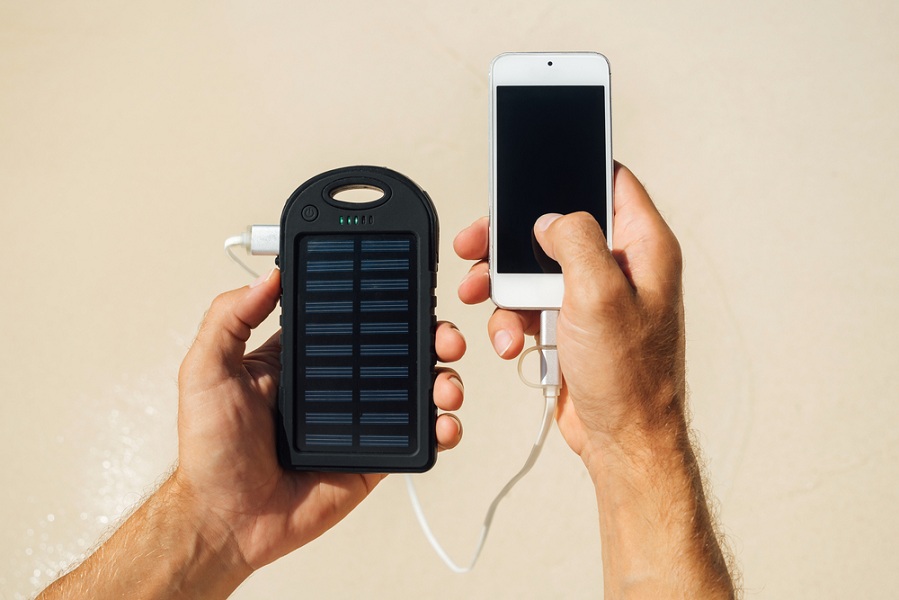
We’ll start with the most expensive component of a home solar system - the batteries.
The amount of power you need to store determines the number and size of batteries you need to buy.
At a minimum, the solar battery or batteries have to store enough power to meet your daily power consumption.
To figure out how much energy you consume in a day, refer to your power bills for the last 12 months. Your monthly usage likely fluctuates as you turn up the AC in the summer.
The monthly average is the best way to estimate your energy needs. Add up the number of kilowatt-hours (kWh) you consumed each month for the last one year and then divide the total by 12.
For our calculations, let’s say your average monthly consumption is 500kWh. We’ll also assume you want to offset the entire amount with solar.
Next, calculate your daily consumption by dividing your monthly figure by 30. In our case it is 500/30, which is 16.6kWh.
Note: If you want a solar system to power just a few appliances or devices (e.g. a fridge, TV, laptop etc.), multiply the watts of each appliance with the number of hours it runs daily. Add up the watt-hours for all appliances to get total daily consumption.
So we need batteries that can store & deliver at least 16.6kWh of usable power per day.
If you plan to use lead acid batteries, you’ll need enough of them to store twice your requirement (33.2kWh) because these batteries discharge only up to 50%.
For lithium batteries that discharge up to 80-90%, you need to add a much smaller margin (an 18kWh LiPO4Fe battery bank will do).
That’s not all. We still need to factor in days of autonomy.
If you are off-grid, having enough power to supply you with 5 days of autonomy is ideal in case you get prolonged bad weather and can’t collect enough solar power.
So you’ll need batteries (assuming you use lithium batteries) that can store 90kWh of power.
That said, if you live in a sunny area, you can go with 1-3 days of autonomy to reduce battery cost. To make up for the smaller batteries, get more or bigger solar panels to ensure they can charge the batteries quickly.
For our calculations, we’ll use 3 days of autonomy. That’s 18kWh x 3 = 54kWh. That’s the gross storage capacity of batteries we need.
We’ll choose this 5.12kWh 48V battery (48V is the best voltage for a large residential solar system) from Ampere Time.
To get the number of batteries necessary, we divide 54/5.12 = 10.5. So we need 11 of the Ampere Time batteries connected in parallel to set up our battery bank.
If we repeat the above calculations with a lead acid battery, we’ll need 99.6kWh of storage capacity (33.3kWh x 3 days of autonomy).
The 113 kWh Outback Power 48V AGM Battery from SunWatts will meet your needs with capacity to spare.
How To Size Solar Panels

You now know the size of the battery bank you need for your solar system. The next step is figuring out how many solar panels you’ll need to recharge those batteries.
When sizing solar panels, you want at least enough to fully recharge your battery bank in a bright clear sunny day. This ensures that on most evenings, your batteries have enough energy.
So your total solar panel output should match your average daily consumption, at a minimum.
Continuing with our imaginary home with a daily consumption of 16.6kWh.
If we get solar panels that can generate more than this amount of power, we’ll be sure that the batteries will be topped up by evening every sunny day (or at least on most days).
For example purposes let’s choose the Renogy 24V 320W solar panels.
Assuming our home is located in a sunny location that gets 5 peak sun hours daily, each panel will produce 1600W or 1.6kWh of power daily (320*5).
You can see peak sun hours for your state here, though it may be slightly different in your local area.
To determine how many solar panels we need, we divide the total daily output we need by the output of one solar panel. That’s 16.6/1.6 = 10.3 solar panels.
Because solar panels are relatively cheap and they don't always produce 100% of the rated power output, we’ll order 12 solar panels that will produce 19.2kWh of power daily (12*1.6kWh).
Because the solar panels are 24V, we’ll have to find a way to string them to get 48V that matches our battery bank (we can create two series-connected groups of 6 parallel-connected panels each).
Your power consumption is not the only factor to consider when deciding how many solar panels to get.
Additional considerations include:
How To Size A Solar Charge Controller
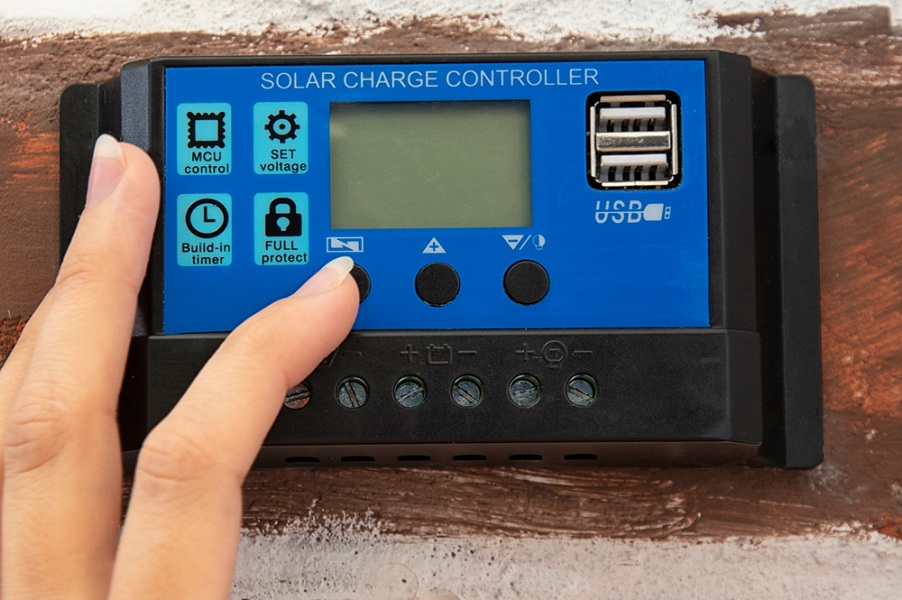
Solar charge controllers are sized using amps and voltage.
In our example above, we are setting up a 48V system, so we’ll get a matching 48V charge controller. If you have a regular 12V system, get a 12V controller. Ditto for a 24V system.
Now we need to calculate how many amps the charge controller will need to be able to handle.
Amps or current is equal to watts divided by volts (A = W/V ). Take the total output of your solar panels (320W x 12 panels in our case) and divide it by the voltage of your batteries (48V).
Total amps will be (320 x 12)/48 = 80A.
Because you should always leave a safety margin, we’ll pick the next biggest solar charge controller, which is 100A.
Renogy has a 100A MPPT solar charge controller that supports 12V to 48V solar systems.
How To Size An Inverter?
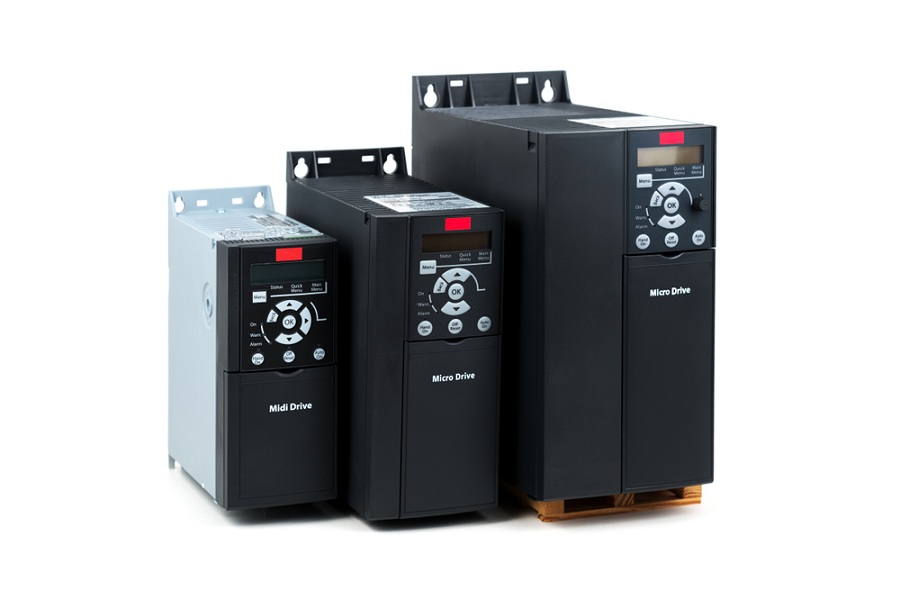
The inverter converts DC power from your battery bank to AC power that’s distributed around your home to appliances and outlets.
There are two ways to size an inverter depending on whether you have a grid-tie solar system (no batteries) or an off-grid system (with batteries).
How To Size A Grid-Tied Inverter
The amount of power (watts) that your solar array produces determines the size of the inverter that you need.
Solar power technicians use the term array-to-inverter ratio or inverter loading ratio to define the relationship between the solar array and the inverter. It is the ratio of your solar panel output to your inverter’s power rating.
Say your solar panels produce 1500W of power and you have a 1500W inverter. The ratio is 1.
If your solar panels produce 1800W with a 1500W inverter, the ratio is 1.2.
A 1:1 ratio looks sensible, but it’s not the most efficient. That’s because solar panels usually don't produce the rated power.
In reality, the ratio will be less than 1. That is, the solar array will produce less power than the inverter can convert. This is inefficient.
You want an inverter that has a power rating slightly lower than the labeled output of your solar panels. This ensures that the inverter is handling close to its rated power capability once you take into account that your solar panels produce 70-80% of their rated output.
For instance, a 1500W inverter for a solar array output of 1800W (the real life solar output will be close to 1500W). That gives you an inverter loading ratio of 1.2, which is close to the recommended 1.25 ratio.
In areas with low sunshine, the ratio can be even higher. You can get a smaller and cheaper inverter since you know solar panel output will be much lower than stated.
But don’t go beyond a ratio of 1.55. That will result in a phenomenon called clipping. The solar panels will be producing too much power than the inverter can handle, resulting in energy losses.
Let’s go back to our example home solar system. Let’s assume we are not using batteries, but instead we are connecting our solar system to the grid.
We have 12 panels each producing 320W. The total output is 3840W.
We want to achieve the recommended array to inverter ratio of 1.25. 3840/1.25 gives us the ideal power rating of the inverter, which is 3,072W.
A 3kW inverter will be perfect for our needs.
Sizing an Off-Grid Inverter
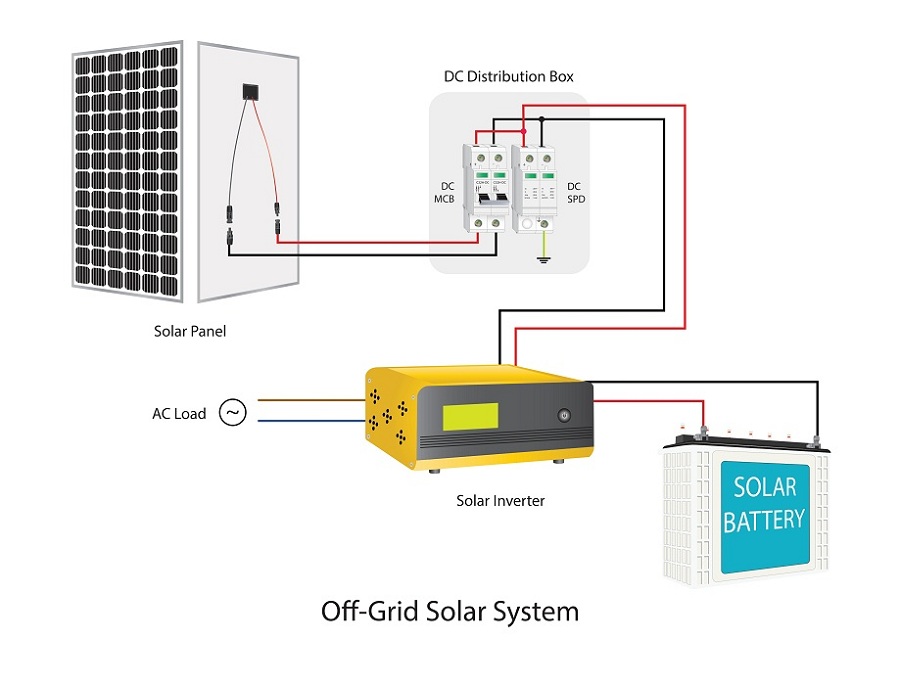
With an off-grid solar system, you size the inverter based on your combined power consumption.
In other words, the amount of power you’ll pull from the batteries at the same time determines how big an inverter you get.
This ensures you don't trip the inverter by pulling more power than it can handle.
You’ll need a pen and paper for this.
Figure out the major appliances in your home, RV, cabin or boat that are likely to be running at the same time. This includes appliances that go on and off automatically like the refrigerator.
Say we have a 500W refrigerator, a 3000W central AC, a 100W LED TV, and a variety of low power electronics like lights and a computer.
All these running at the same time will draw about 4,000W of power. Let’s assume that you’ll also switch on at least two high-wattage appliances like a 1200W microwave and a 1400W washing machine.
This adds 2600W to the total power draw. So now we need to account for a power draw of at least 6,600W (4,000 + 2,600).
We need an inverter that can supply this amount of power. Adding the usual safety margin, a minimum 7kW (7000W) inverter is ideal.
Make sure you get an inverter that converts DC power to the standard 110V AC that most American appliances use.
Bottom Line
There are a few other components that we’ve not talked about. For example, cables, breakers, and fuses.
But the professionals installing and wiring your solar system will give you advice on how to size these components.
Remember that the numbers we’ve used above are just an example to demonstrate how to size different parts of a solar system.
When planning your solar system, plug in your own numbers. For instance, you may need more or less power than the 16.6kWh daily consumption we’ve used in our example.
You may also be planning a 12V, not a 48V system. In that case, use 12V in your calculations.
It’s a good idea to check your final calculations and numbers with a professional to make sure they are accurate and that you’ve not missed anything.
A solar system is not cheap, so you should get it right from the get go.
Frequently Asked Questions on Solar System Sizing
How much kWh is required for a house everyday?
It depends on how much power your electronics use and how long they run each day. But on average, American households use about 900kWh of power per month, or about 30kWh per day.
For a more accurate figure, check your power bills for the last 12 months. Add them up and divide by 12 to get your average monthly consumption.
Divide this by 30 to get your daily power consumption.
Can I run my house on solar power only?
Yes, you can definitely run your house on solar power only.
You must first calculate how much power you use everyday, and then install enough solar panels to generate that power, and enough batteries to store that power.
If you are on a budget, you can set up a solar system to offset a part of your daily consumption (maybe 50%) and then slowly expand your system over time by adding more panels and batteries.
What size solar system do I need for 2000 kWh per month?
To generate 2,000 kWh per month, you need solar panels that can produce about 67kWh per day (2000/30).
Assuming you get 5 hours of peak sunshine, you need solar panels with a rated output of 13.4kW or 13,400 watts.
If you buy 400W solar panels, you’ll need 34 solar panels (13400/400).
You also need batteries that can store and produce at least 67kWh per day. If you get lead acid batteries, they need to have a combined capacity of 134kWh (67x2) to meet your needs. That’s because lead acid batteries discharge to 50%.
Lithium batteries can be discharged to 80-90% so a 70-80kWh battery bank will do.
Is a 1 kW solar system enough to run a house?
A 1kW system is not very big. It means the solar panels produce 1,000 watts an hour and can produce about 4,000 to 5,000Wh per day (4-5kWh).
The average American household consumes 30kWh per day. So 5kWh is a little in comparison.
But it might be enough to run a tiny home, an off-grid cabin, or an RV. You can also install a 1kW solar system in your home and use it to run just the lights and select appliances.
You still get to reduce your power bill.
How many batteries do I need to power my house with solar?
It depends on how much power you use per day. At the minimum, get enough batteries that can hold the amount of power you use each day.
To account for cloudy days, multiply your daily power usage by 3 days and get batteries that can store that much power.

